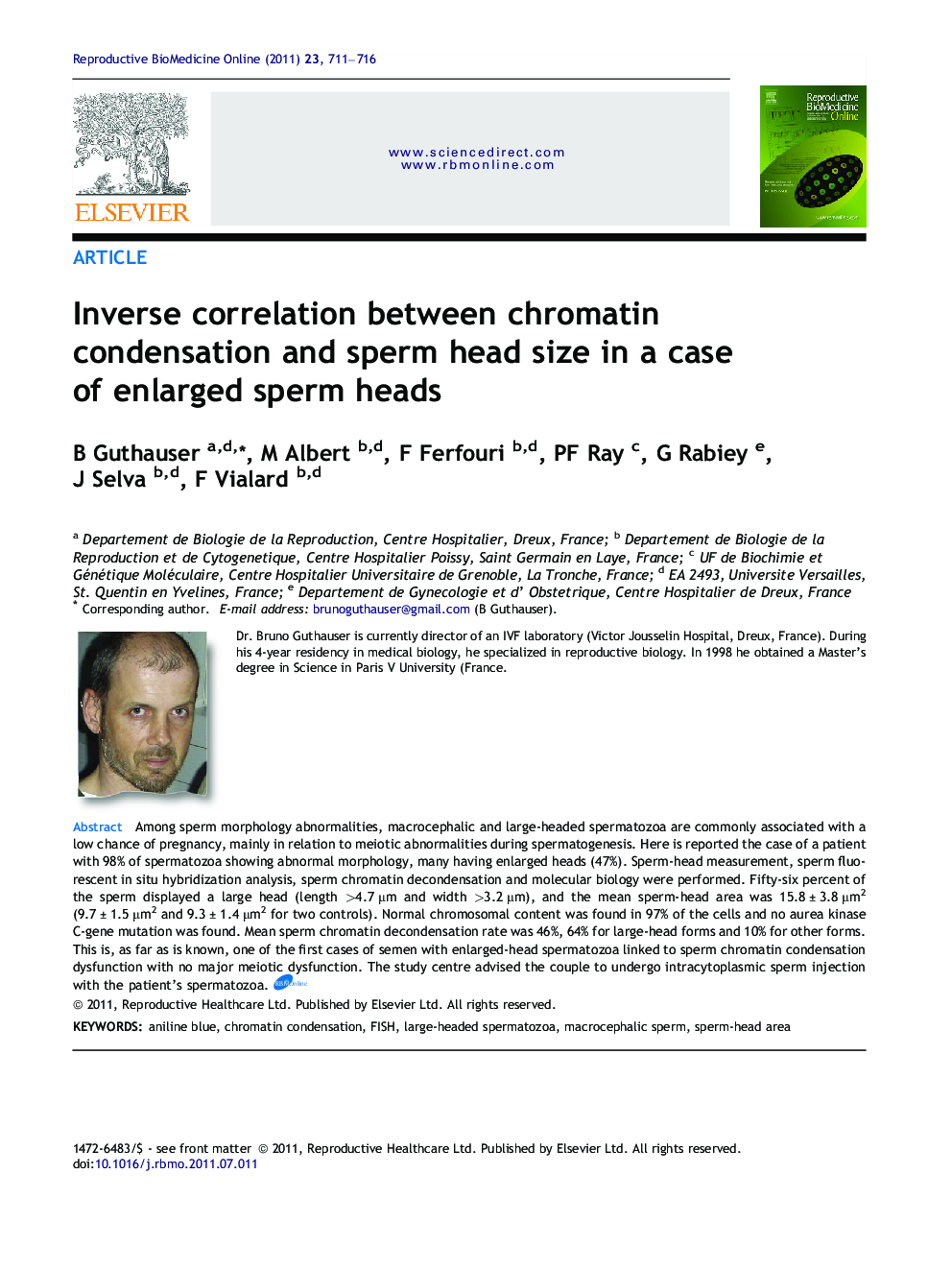| Article ID | Journal | Published Year | Pages | File Type |
|---|---|---|---|---|
| 3971226 | Reproductive BioMedicine Online | 2011 | 6 Pages |
Among sperm morphology abnormalities, macrocephalic and large-headed spermatozoa are commonly associated with a low chance of pregnancy, mainly in relation to meiotic abnormalities during spermatogenesis. Here is reported the case of a patient with 98% of spermatozoa showing abnormal morphology, many having enlarged heads (47%). Sperm-head measurement, sperm fluorescent in situ hybridization analysis, sperm chromatin decondensation and molecular biology were performed. Fifty-six percent of the sperm displayed a large head (length >4.7 μm and width >3.2 μm), and the mean sperm-head area was 15.8 ± 3.8 μm2 (9.7 ± 1.5 μm2 and 9.3 ± 1.4 μm2 for two controls). Normal chromosomal content was found in 97% of the cells and no aurea kinase C-gene mutation was found. Mean sperm chromatin decondensation rate was 46%, 64% for large-head forms and 10% for other forms. This is, as far as is known, one of the first cases of semen with enlarged-head spermatozoa linked to sperm chromatin condensation dysfunction with no major meiotic dysfunction. The study centre advised the couple to undergo intracytoplasmic sperm injection with the patient’s spermatozoa.Among sperm morphology abnormalities, macrocephalic and large-headed spermatozoa are commonly associated with a low chance of pregnancy, mainly in relation to meiotic abnormalities during spermatogenesis. We report the case of a 51-year-old referred to our centre for a 3-year history of secondary infertility who had 98% of spermatozoa with abnormal morphology and many with enlarged sperm heads (47%). Sperm head measurements, sperm fluorescent in situ hybridization analysis, and sperm chromatin decondensation were performed to propose the best treatment for this couple. In contrast with previous studies indicating a high abnormal chromosome content correlated with the percentage of macrocephalic spermatozoa, 97% of the spermatozoa in this case had a normal content for chromosomes analysed. Aniline blue staining showed a high rate of decondensed spermatozoa (46%), compared with controls (19% and 20%). We showed that the mean sperm head area for decondensed sperm heads was greater (P < 0.0001) than that for condensed sperm heads, and an increased rate (P < 0.0001) of decondensed sperm heads was found for macrocephalic spermatozoa (>14 μm2), compared with normal sperm heads; respectively 64% and 10%. Because during the ICSI procedure the operator select apparently normal sperm form (mainly with normal condensed head), we advised, in this particular case, the couple to undergo ICSI with the patient’s spermatozoa as they had a good prognosis compared with previous data published for macrocephalic spermatozoa.
